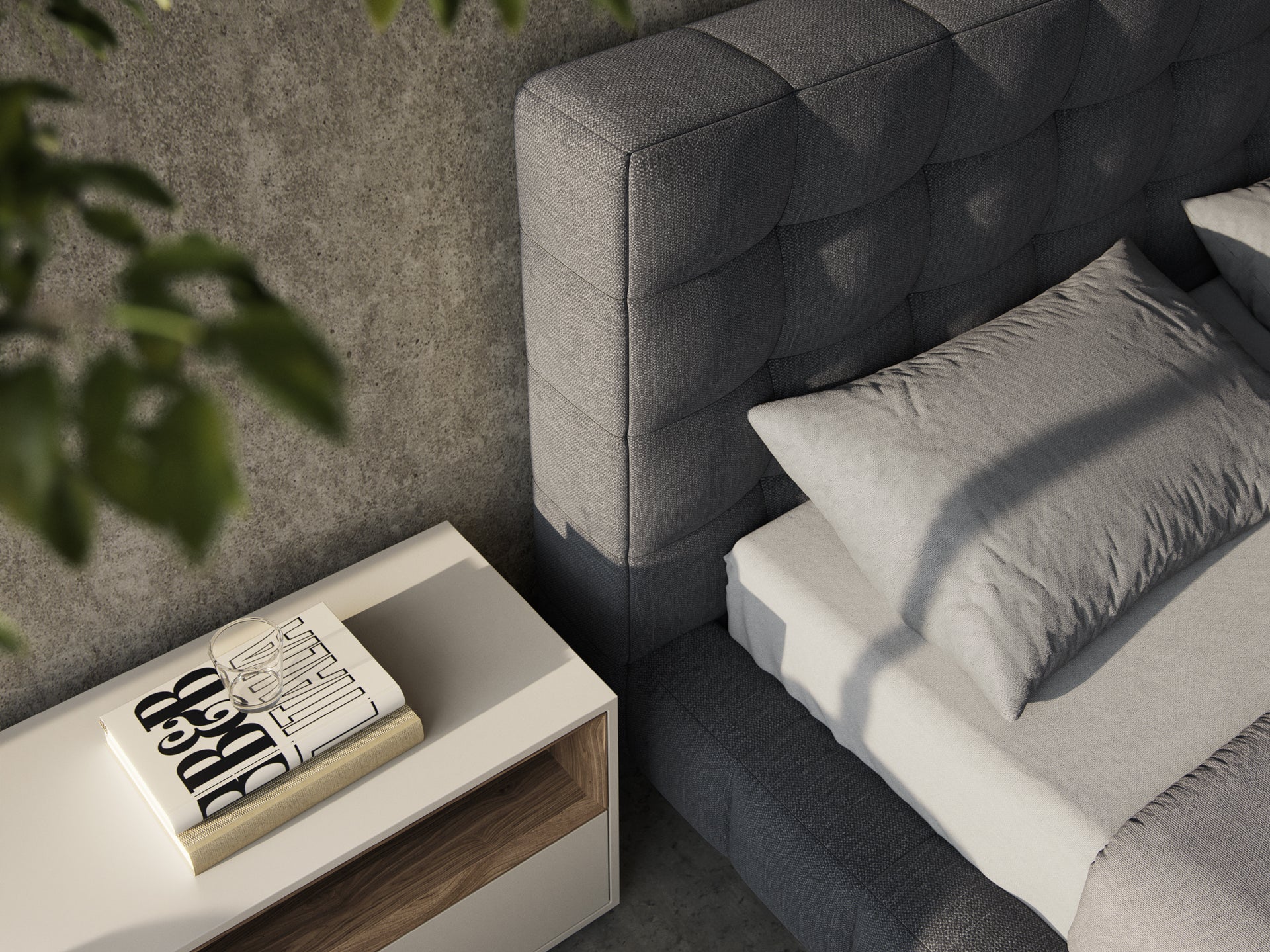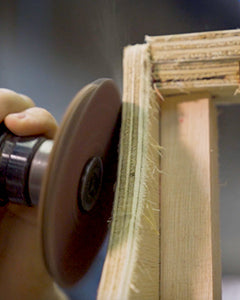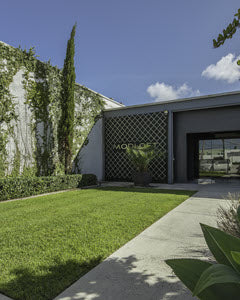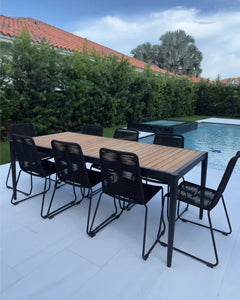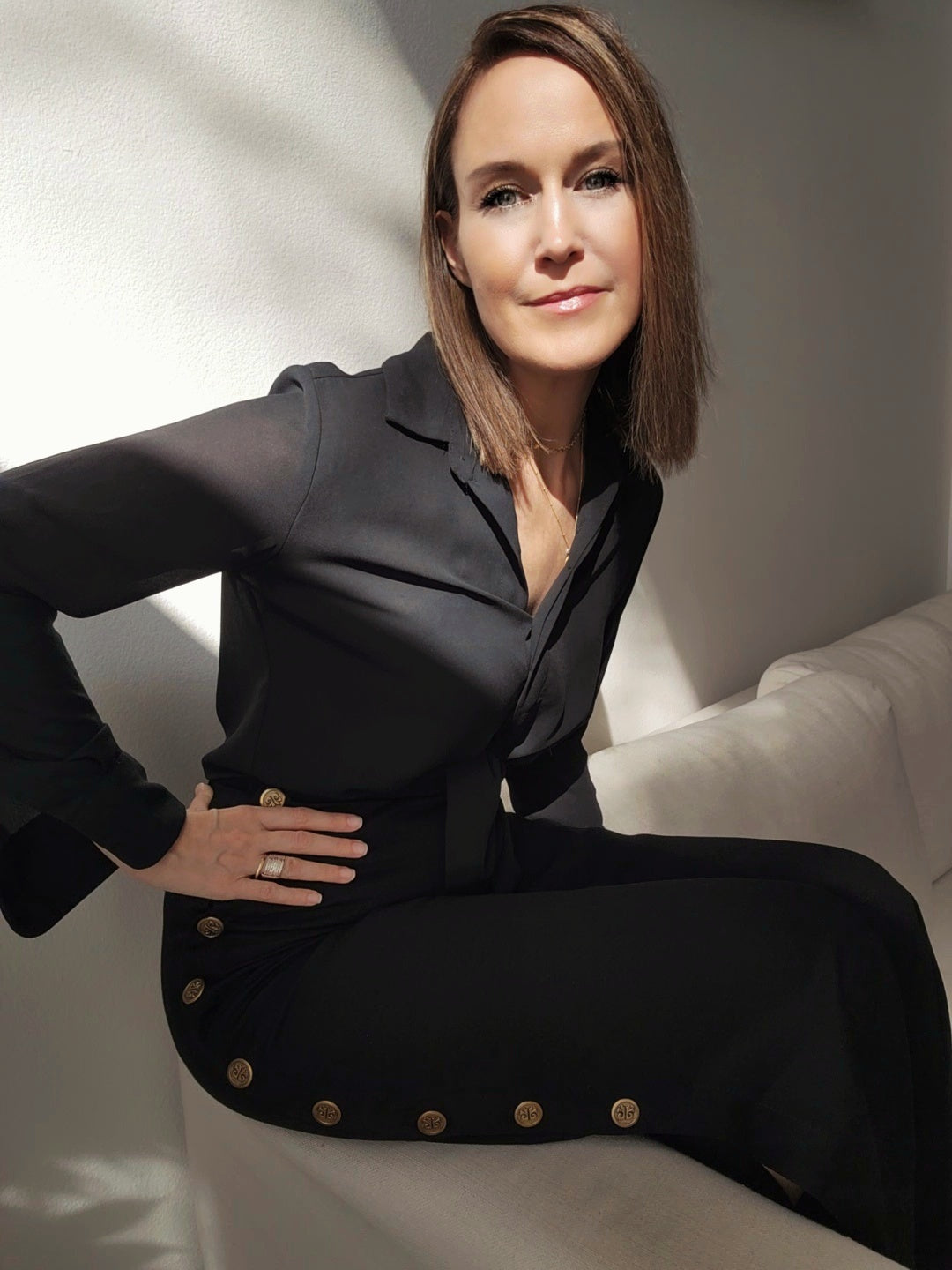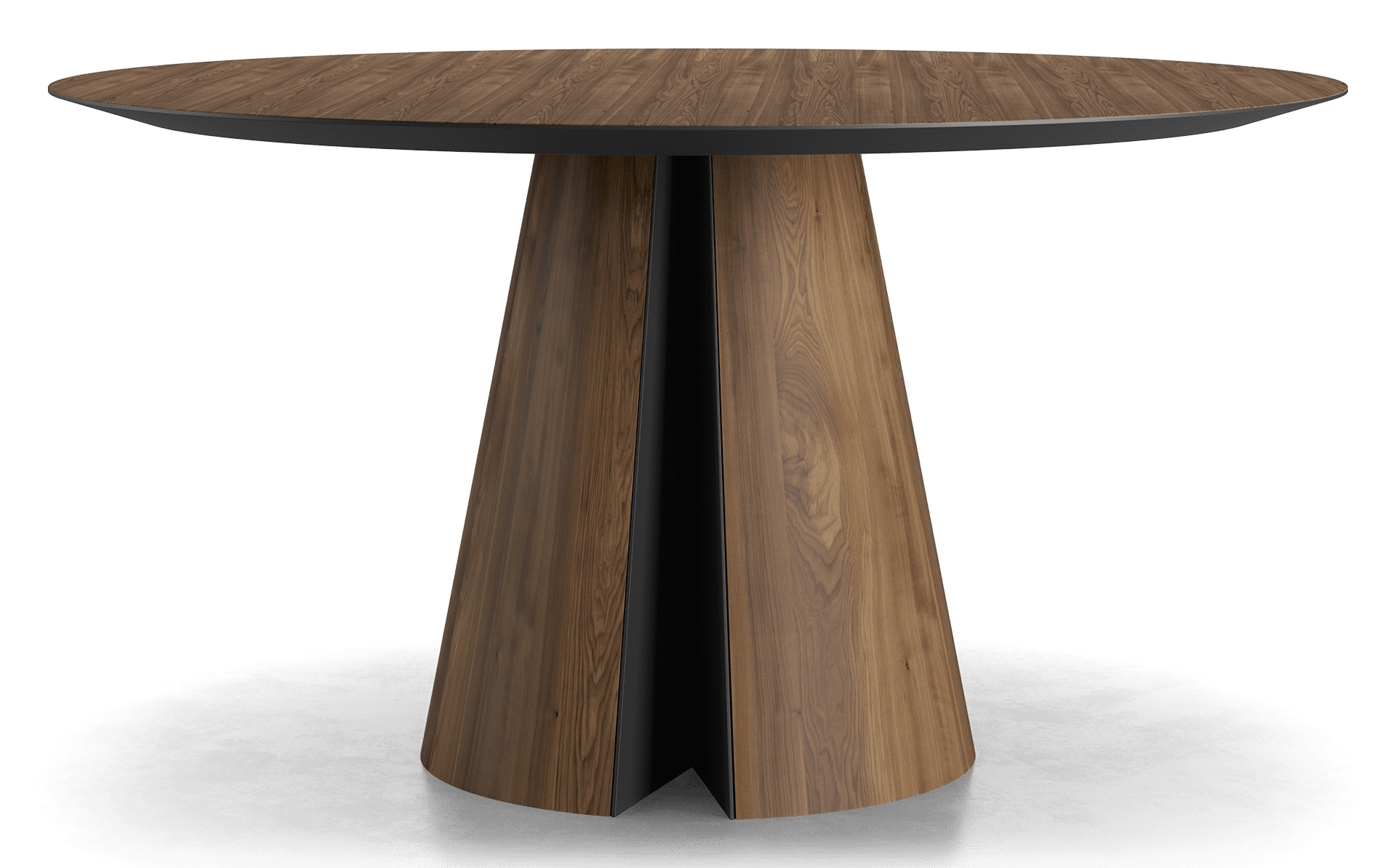I: Can you tell us a bit about your design philosophy and what inspires your work as an interior designer?
AC: My body of work is curated towards the style of each client I work with. I love to view design through their lens. It helps me achieve their desired look and also because I appreciate so many different styles of design. But for my own personal taste I would say that I lean towards a transitional base mixed with a modern twist and a layer of vintage. I have a strong passion for texture and the use of contrast. Those two elements make my design world go round by keeping the project from falling flat in being more multi dimensional. And I should also mention that I love implementing beautiful lighting fixtures. It is another form of artwork to me.
I find influences through exploring different cultures and their design + architecture. I am also influenced through so many designers, architects, & artists in history to present day. I go down a rabbit hole of researching their work online, which also leads me to other products and materials on the internet (Pinterest, Instagram, Houzz, etc). And I take time in observing my clients interests, style, and their influences, which help in making the puzzle fit.
And I try not to follow too many rules to allow each project to become it’s own unique fingerprint. It is a blend of the client’s style and trying to push them outside their box a bit. This allows for the unexpected parts of themselves to show through their designed space.
I: As an interior designer, how have you incorporated Modloft products into your design projects, and what do you find unique about Modloft's offerings?
AC: What I love about Modloft is their modern silhouettes, details to craftsmanship, sophisticated finishes in their rich wood tones, beautiful metal details, and their luxe textures they offer. So much of my design relies on those beautiful frames and elegant layers to create a composition that reflects the personality of who is using the space. It transforms into a more timeless and elevated environment.
I: How did you get started in the world of interior design, and what drew you to this profession?
AC: I was raised in a world of interior design because of my mother, Vida Murray of Vida Bartkus Interiors. I grew up floating through the halls of the Merchandise Mart (Chicago) with her. I say float because a woman in heels on a work mission demands keeping up with. I loved to observe how focused she was on her clients and the way she interacted with them. She is such a polished designer, but one who allows her clients to feel seen and heard. I absorbed everything I could from working with her. Some of my most impressionable lessons were how she cared for each detail, how she valued transparency, and even how she chose to run her business in a home office. It was easy for me to see an example of structure working within your family confines. Because she never lost sight of her work day or her family’s schedule. I would say she has always been much better than me at the family/life vs work balance. I am still working that one out.
It was not just being around an interior designer that drew me towards the profession. I think it’s innate and also necessary to have that inner passion to succeed in this field. There were many late nights rearranging my bedroom or parts of the home I grew up in. And my mother allowing me the space to create was priceless. She always was so encouraging, but not pushing me into that field. There was never a time when she sat down and asked me if I would take over her business or go into the field. Looking back I find it very cool that I told her I’m moving to LA to become the next JLo (act, sing, dance) and she said go for it.
The only stipulation my mother expressed was that I follow my dreams after I completed college. And at that time I only had one year left to achieve my degree at Harrington Institute of Chicago for Interior Design. And I am proud that I completed my education from such a prestigious school. At the time I was studying, it was top 3 in the Nation and it was accredited by the Council for Interior Design Accreditation (formerly FIDER). We learned from teachers who were working or had worked in the field. Which in all honesty was an intense learning experience displayed by a small graduating class.
And although I took the time to complete my education there (along with my first two years at U of I Champaign Urbana), I still hopped in a car with my grade school friend with stars in my eyes anyway. Clearly Hollywood did not pan out for me. But I had developed so many great relationships, learned from holding so many different jobs in entertainment and retail, but most importantly I met my husband. And it was him who saw that where I was working was not wholly fulfilling my inner creativity. And so that path was reawakened.
We decided after some time to move back to Chicago and I began working for my mom again. And in the attempt of a shorter story, I later opened my own business. I did so into the beginnings and through the thick of the recession. Again, you really have to love this job to hang on through the ebbs and flows of what the design field undergoes. There were so many tears, multiple side jobs, and even food stamps, but I am a very determined individual and pushed through it all. When they say hard work pays off they are not kidding about putting in the effort. It is always hard work meeting opportunity that changes your story. You can have an opportunity present itself, but if you don’t put in the work prior you might not be ready for it.
I: What role does sustainability play in your design projects, and how do you make eco-conscious choices in your designs?
AC: Sustainability in design is not only important to me, but also my clients, as we look to achieve a better environment now and for future generations. Offering products and building materials that are eco-conscious are one of many ways we can make choices that change the trajectory of the declining health of our planet. Also, I often work in new pieces with clients existing furniture or buy vintage. I love when we can save pieces they love or that I fall in love with when possible. And I sometimes will refresh the older pieces with new finishes. Because it not only helps compliment the overall design, but in doing so it keeps that piece from hitting a landfill. I like that the more we use sustainable, vintage, eco conscious, and up-cycled products in the design world that we can make a difference in trying to eliminate waste, chemical emissions, and pollution.
I: Many clients look for personalized and unique interiors. How do you ensure that each design you create reflects the individuality of your clients?
AC: Clients all hold unique visions of what their expectations are of their surroundings. I try to curate the look by listening to them and viewing examples of their ideal style. I enter their design world by looking over the pieces they love in their current environment, new items they wish to implement into the space, and by seeing what they gravitate towards in inspirational images. I work in layers that give them comfort in their space while also pushing them outside the edges of their design box. This creates an unexpected environment that they find refreshing, but still feels like home to them. And if I can also add the space should not only look good, but also be high functioning. I love when we take a room that is rarely used and it becomes the room with most traffic.
I: Collaborating with clients can be a challenge. Can you share some insights into how you manage client expectations and bring their visions to life while maintaining your design integrity?
AC: The design process can be very stressful on a client. From the beginning I do my best to explain that and why that is. I try to provide insight that in this process from trades, to vendors, and especially from your design studio, we all only want the best possible outcome for your project. It is important they trust you and your team before they even start signing a contract.
To this day I have to remind myself with each new client that I can not assume their knowledge of the process. I know that most of the clients are not reading the intro packets in depth. And so we do our best to go over the process beforehand so they can be able to understand things before we start.
We also try to create a smoother process by working behind the scenes on their behalf. It is our goal to keep clients from dealing with unnecessary conversations that they really have no time for by problem solving and working ahead of the problems that might occur. And then engaging with the clients once we have the solutions or options needing their approval. Having my design come out seamlessly is very important to me, but my clients happiness is my main goal. I know it has surprised some clients how deeply I care.
I: Alida, what's your favorite project or design you've worked on so far, and what made it stand out for you?
AC: That is like asking “which child do you love most?”. There are so many things I enjoy about each project. And because they are so different, again like children, you love them for different reasons. So I wish I could give you a highlight reel, but it would just exemplify that I am longwinded in responding. Because you will end up hearing what I love about each project I have ever done.
I: Interior design is an ever-evolving field. How do you stay updated with the latest trends and technologies to continue delivering fresh and innovative designs to your clients?
AC: This is so true! I think if you make peace with that constant evolution, then it allows you the patience to keep forward movement in design. Because the challenge to keep up with innovation and design transformations can be somewhat paralyzing if you think about it too much. And I have to thank my vendors and trades for always pushing me forward with new technology, products, and seminars.
In reference to trends I tread lightly though. I truly hope that everyone expresses themselves in design materials, solutions, and products before implementing a trend. In the end the design is built for the person living there; and will remain timeless to them if it is done in their personality and not for the sake of a trend.
Trends are fun, but only if you are really seeing yourself in what that trend is long term.
I: Design is often seen as a reflection of one's personality. How does your own personality and style influence the work you do as an interior designer?
AC: That is a great question. Because I work in so many different design styles I think I see myself in my projects through my love of texture and use of contrast to varying degrees. And maybe my addition of twisting in some modern elements. I like to infuse modern even if it is through an accessory, artwork, or accent chair. I would say I lean a tad more edgy then most of what my clients design styles are. And so I push a little with design ideas and they reign me back in with what they are comfortable with. I think that is what makes the design that much better. Collaboration helps you realign your mindset and keeps your design style fresh and exciting. And it’s the same for the clients as well. I get them to implement something they would not have achieved on their own. It works both ways though.
I: And last but not least, can you share with us: Which is your favorite Modloft product?
AC: That is a hard one to answer but I will start with this. What I love about Modloft is the ease of style options that are offered from dining furniture to bed frames. But if I am forced to pick only one product right now, then I am most excited by the Finsbury coffee tables. That leg!!!! So good.
___________________________
Follow Alida's work:
alidacoury.com
@alidacouryinteriors
